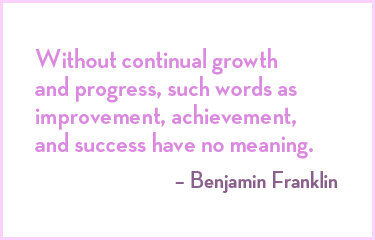Secure Early Wins in the First 3 Months - New Tech Leader Series
Focus on early wins
(Note: This post is part of a series for new technical leaders that are joining a new company, or taking over a new organization or team; and while written for new CTOs, VPs of Engineering, or Software Managers, could be applied to other technical positions. This is also written largely for smaller to mid-size teams with a bend towards startups.) The good thing about being new to a company is that you get to start over fresh. The bad thing about being new is that you have to start over fresh. And of course if you are starting in a position of authority or management, then everyone within your organization will be wondering – “Is he/she going to be a good boss?”If you think of your relationships with people as a series of interactions, like Polaroid pictures, then the fewer you have to more prominent each becomes in that person’s view and assessment of your relationship. This is why it is critical that your early tenure with the company and your coworkers is positive. Your beginning impressions will set the tone for the relationships, culture, and environment for the future in this company and role – so be sure you make them good ones!In order to the set the right tone and get started on the best path, it is key to secure early wins. The rest of this article will focus on some strategies that have worked well when transitioning into new leadership roles.
The good thing about being new to a company is that you get to start over fresh. The bad thing about being new is that you have to start over fresh. And of course if you are starting in a position of authority or management, then everyone within your organization will be wondering – “Is he/she going to be a good boss?”If you think of your relationships with people as a series of interactions, like Polaroid pictures, then the fewer you have to more prominent each becomes in that person’s view and assessment of your relationship. This is why it is critical that your early tenure with the company and your coworkers is positive. Your beginning impressions will set the tone for the relationships, culture, and environment for the future in this company and role – so be sure you make them good ones!In order to the set the right tone and get started on the best path, it is key to secure early wins. The rest of this article will focus on some strategies that have worked well when transitioning into new leadership roles.
Understand the state of the company and organization.
We already covered getting your hands around understanding the company strategy, but it is equally important to really understand the desired changes or expectations for your role and team.If you are in a new startup then chances are that you are supposed to be helping with strategy, identifying the right product and market fit, and potentially hiring the right people. If you are joining a great team that is already successful, then your job first and foremost is not to screw that up, and hopefully to be a catalyst making everything better – supercharging the organization. Or perhaps you are entering a disaster area, where there is low morale, things aren’t moving in the right direction and if you don’t turn things around then there are likely dire consequences. Of course each of these scenarios involve different circumstances, so be thoughtful about how to apply your early wins strategy.
Come up with a plan
You may already have ideas if you have been listening to your team, and really getting to know the current state and future direction of the organization. From that here are some key areas to turn your attention to that are good potential areas for early wins:
Build a great team
As any great leader knows success can only be achieved with a great team. The cornerstone of any new leader’s plan should be to build a great team and get the right people in the right roles. Of course the best way to do this is by listening and observing. There are some key areas to focus on in the first 3 months: recognizing top performers, addressing poor performers, and hiring awesome team members.
Look for opportunities to recognize or promote your top talent.
When you join a new team there is a good chance that many employees will see this as an opportunity for change for themselves. And in many ways this is a great thing, because you can build alliances by giving people what they want. For example, there may be a hard-working, loyal employee is thinking that they will finally get that promotion. Or potentially the software tester is hoping he will have more bandwidth to demonstrate his coding prowess on automation tools instead of testing browser compatibility issues.By helping top performers see rewards and recognition for their past achievements you create trust and strengthen their relationship with you and the organization. It sets an early example showing that you value contribution and hard work. In any transition securing the right team will be key to your long-term success.
Deal with poor performers quickly.
As you can probably guess from you experience, that anytime authority changes there will be people testing those boundaries. Since great employees want to work with other great employees that pull their own weight, making swift changes to address performance problems will not just help you deal with those people, but they will also make your great employees happier.If you are there to clean up a problem (or disaster area) then chances are that there are some people that are not cutting it – either because they don’t want to or don’t have the skills to do the job – so making swift changes are often best since things are already a mess. In successful teams there may not be any of these people, or it may be unclear – and so slow thoughtful moves are advised.But no matter what your situation, you cannot go wrong by setting clear goals for each team or person in your organization, and tracking their progress against those initiatives. Be sure to take extra time to dive in and verify progress; it is easy to gloss over details when everything is new, however it is also the best time to ask lots of questions and thoroughly understand how all the work is getting done. Try to take the time to understand the root of the performance problem though, since it is possible it is systemic and not the individual.
Hire and recruit great people.
For most new leaders there will be the opportunity to hire and recruit great people for your team. In startup situations, this may be one of the primary responsibilities of your role. Be extra rigorous and thoughtful of every person that you bring on – so that they can set an example to the rest of the team. Bringing in new great employees will lend to your credibility and help you build new alliances within the organization.
Streamline operations and improve efficiency.
As a new leader there are likely a lot of areas of the organization that could be improved. For example, perhaps there is a lot of technical debt that needs to be addressed, or the operations required to keep the website up is over-taxing the team. As you observe and notice these pain points try to come up for ways to improve them. Here are some ideas:
Setup training
If you have other great employees within you team that are not performing their roles successfully, by setting up training or other educational opportunities it can build your credibility with those team members, as well as make your team and organization better.For example, if you are in a startup situation and doing a lot of hiring, training the team on how to interview and helping standardize that process can make everyone more productive and successful and at the same time build valuable skills for your existing team members.
Improve communication.
A big part of leadership is keeping everyone on the same page. And chances are if there hasn’t been someone in this role there are ample opportunities for you to disseminate and share information throughout the organization. This improved communication can help align people and projects and ensure that your organization is headed on the right path. Ask good question and try to find areas where you can help bridge the information gap.
Cut or change ineffective projects.
Very few organizations have the problem of too much focus. And so chances are that there are a lot of things happening already within your organization. As you learn more about the strategy and business really evaluate if these are the right set of projects. Don’t be afraid to change or cut projects that are not working well, or are not aligned with the business strategy.
Add more metrics.
Just like having too much focus, it is also hard to have too many metrics. If there is an area or problem that is not being tracked and measured, then take initiative and setup some monitoring and report the state of things. This is also good to do for any area that you want to make improvements or changes. Being able to quantifiably show improvements or progress is great for any new leader.------------------------------Regardless of your approach though, focus on showing some results and progress within the first 2-3 months on any time. It will help make sure you set yourself up as a leader for your tenure in that role.Good luck!(P.S. If you have other ideas or areas where you can add value and look for early wins please add them in the comments – this list is largely based from my experience and I would love to hear other suggestions from people who have been in similar situations)[tricycle image courtesy of the lovely and talented photographer, Vanessa Johnston]